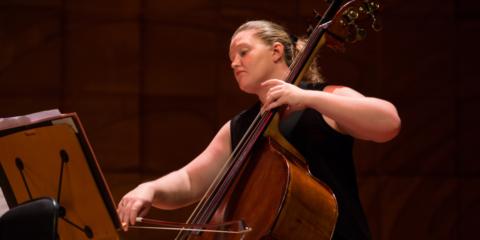MCO’s Mozart & The Classical Age can be heard in Melbourne on Thursday 21 June at The Deakin Edge, Federation Square and Sunday 24 June at Melbourne Recital Centre
MCO: This concert centres on music of the “Classical” period. What sets Classical music apart from the music of the Baroque period, which comes before it, and the Romantic period, which comes after it?
Emma: The Classical period, which emerged in the middle of the 18th century, was a celebration of beauty, simplicity, elegance and balance. It was a reaction to the complexities of the Baroque period, where music was often thickly textured and heavily ornamented. The music of the Classical era moved away from the predominantly polyphonic approach of Baroque music, to the clarity of melody and accompaniment. There was an emphasis on form and structure and, driven by Joseph Haydn, Sonata form was introduced as a vehicle through which composers could organise and develop their melodic ideas. Haydn was also instrumental in developing the symphony and the string quartet and is often referred to as the father of both genres. The music of the Romantic period, which followed in the 19th century, extended the size and range of the orchestra and explored the boundaries of tone colour and harmonic language. Romantic music was more expressive and emotional and was often intended to convey a narrative or evoke specific imagery. Classical music is usually absolute and focused on perfection of form and the beauty of a singular melodic line. I think it is this clarity of melody that makes Classical repertoire so enjoyable for the listener – it is almost impossible to leave a performance of Mozart or Haydn without singing one (or more) of the tunes!
MCO: Mozart & Haydn are both “Classical” composers but each composer has strong distinguishing styles. How do the hallmarks of each composer’s style show through in this program?
Emma: There are many similarities between Mozart and Haydn’s music and it is well documented that they were greatly influenced and inspired by each other’s work. For me, the main point of difference is in their approach to melody. Mozart was a brilliant opera composer and this influence is present in all of his instrumental music. The first movement of Symphony No 30 has the feel of a grand operatic overture with its triumphant opening statements, which precede a singing melody in the violins. In his Piano Concerto No. 6, Mozart again evokes vocal music. The first movement employs longer phrases with florid embellishments that mimic the coloratura sopranos of the time. In the second movement the lilting melody and seemingly unending phrases imitate the effortless fluidity of the voice. Haydn’s music is less melodically driven and is a masterclass in form and style. In Piano Concerto No 11, Haydn’s writing is more pianistic, with shorter phrases and many opportunities for virtuosic display. The first movement is full of energy, brilliance and clarity. Haydn’s use of folk song in the final movement is undoubtedly a nod to his humble beginnings in a rural Austrian village bordering Hungary and brings a new character to the music. This movement displays Haydn’s penchant for incorporating humour into his music with its rapid runs and flourishes and sudden harmonic surprises.

